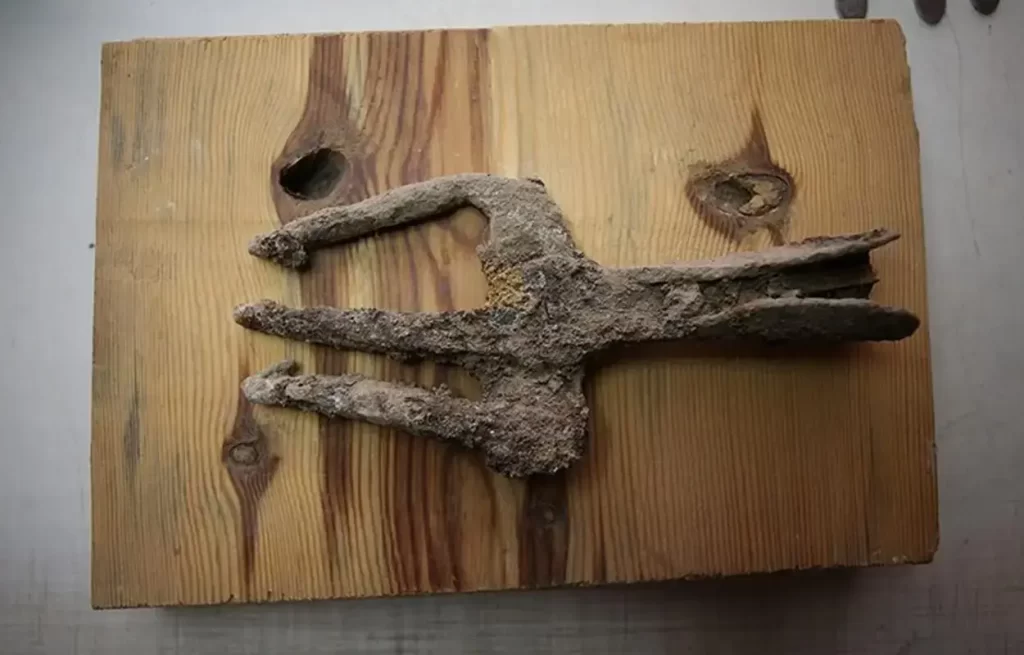Archaeologists from Çanakkale Onsekiz Mart University have made an extraordinary discovery in the ancient city of Assos—a 1700-year-old iron trident. This significant find adds to the historical richness of Assos, an ancient Greek city located on the Aegean coast in what is now Turkey’s Çanakkale province. Assos was originally founded between 1000 and 900 BC by Aeolian colonists and became a prominent center of philosophy, most notably associated with Aristotle, who established a school there.

Assos also holds religious significance in Christian tradition, as it is mentioned in the Acts of the Apostles. The Book of Acts recounts that during his third missionary journey (AD 53-57), St. Paul visited the city. Luke the Evangelist documented that he and his companions sailed from Troas to Assos, where they intended to take Paul on board before continuing their journey to Mytilene. This historical reference further elevates the importance of Assos in both religious and academic circles.
The recent excavation that led to the discovery of the trident took place within the ruins of a Nymphaion, a public fountain or water distribution structure commonly linked to aqueducts in the ancient world. Among the debris of a collapsed vault within this structure, archaeologists uncovered the iron trident, which is estimated to be between 1700 and 1800 years old. This rare find sheds light on the various uses of tridents in antiquity, ranging from practical applications such as spearfishing to their role as polearms in combat.
In classical mythology, the trident is famously associated with the god Poseidon in Greek mythology and his Roman counterpart, Neptune. These deities wielded tridents as symbols of their dominion over the sea, and their representation in art and literature has immortalized the weapon’s association with maritime power. Beyond mythology, tridents also played a significant role in Ancient Rome, particularly in gladiatorial combat. The retiarius, or “net fighter,” was a type of gladiator who fought with a trident and a weighted net. This class of gladiator typically battled against the secutor, using the net to ensnare his opponent before delivering a strike with the trident.
The trident found in Assos is made of iron, a material that presents challenges for preservation due to oxidation over time. According to Prof. Dr. Arslan, the lead researcher on the project, there is evidence suggesting that Assos was home to ironworking activities, meaning the trident may have been manufactured locally. Such discoveries are particularly rare, as iron objects from this period often deteriorate before they can be recovered. Most existing representations of tridents from antiquity are found in frescoes and ceramic depictions of fishermen using them to harpoon fish.
Given the fragile nature of iron artifacts, the trident has been sent for conservation. Experts will carefully remove soil and oxidized layers before applying protective treatments to prevent further deterioration. This meticulous process will ensure that the artifact remains preserved for future study and display.
This remarkable discovery contributes to our understanding of daily life, combat, and craftsmanship in the ancient world. The trident’s presence in Assos raises intriguing questions about its original purpose. Was it used by a fisherman along the Aegean coast? Did it belong to a soldier or a gladiator? The city’s history as a hub of trade and cultural exchange makes all possibilities worth exploring.
Excavations at Assos continue to uncover fascinating insights into the past, revealing new aspects of daily life, commerce, and industry in the ancient world. The preservation of the trident will allow researchers to further analyze its composition and origins, potentially unlocking additional historical details.
The discovery of this 1700-year-old trident reaffirms the significance of Assos as a site of archaeological and historical importance. As researchers continue their work, it is likely that even more remarkable artifacts will emerge from the ruins, offering further glimpses into the lives of those who once inhabited this great ancient city.





